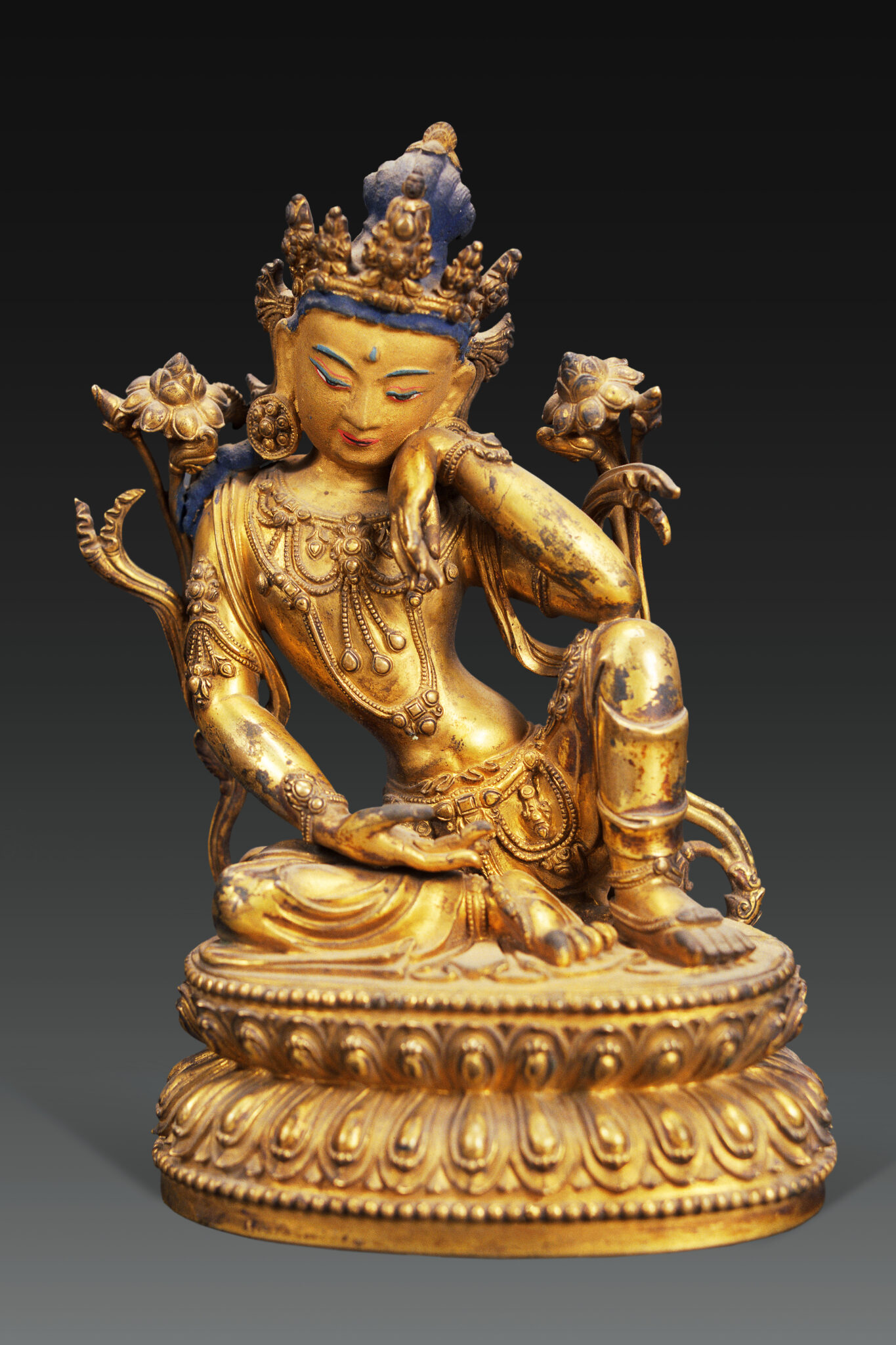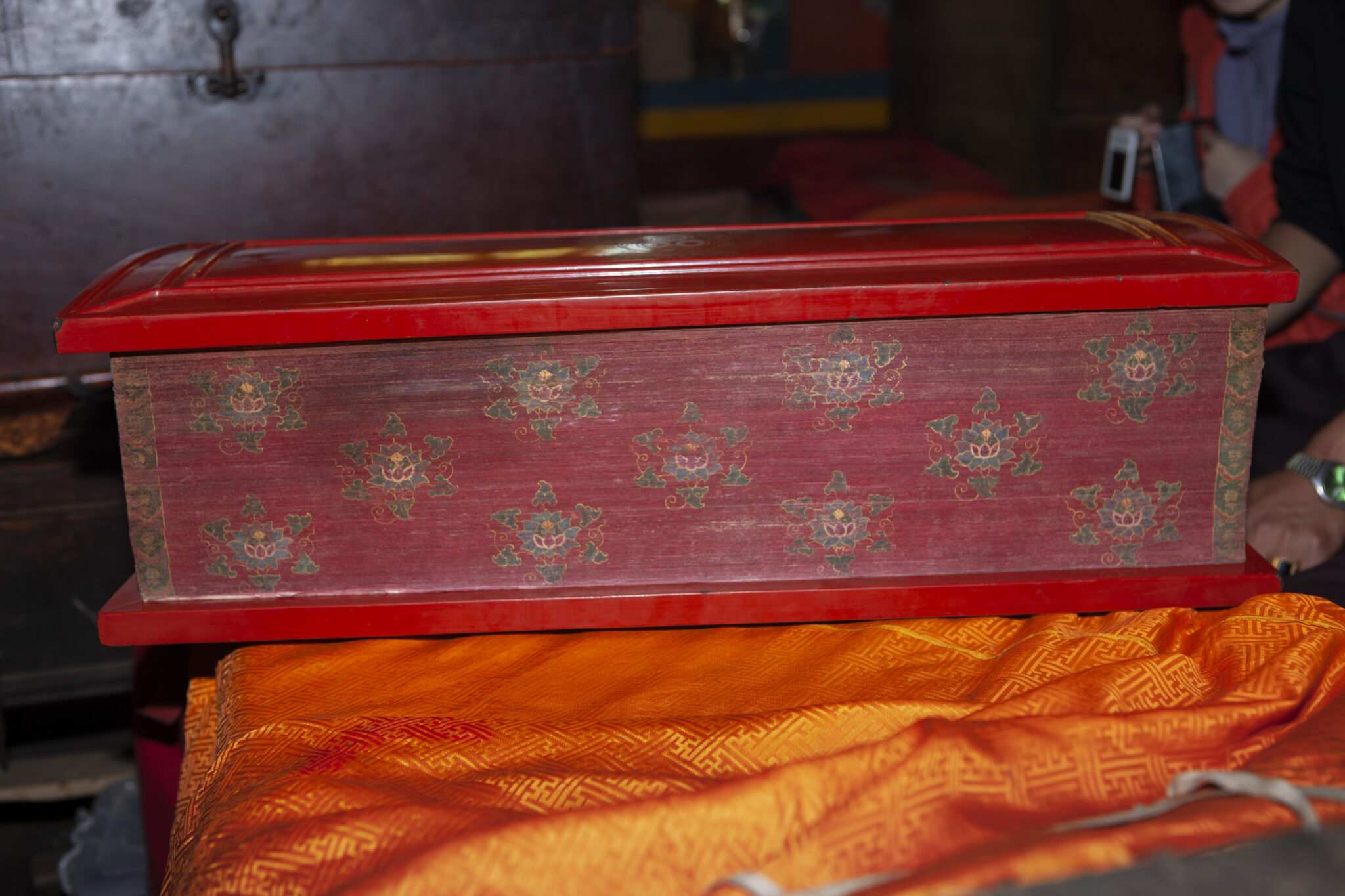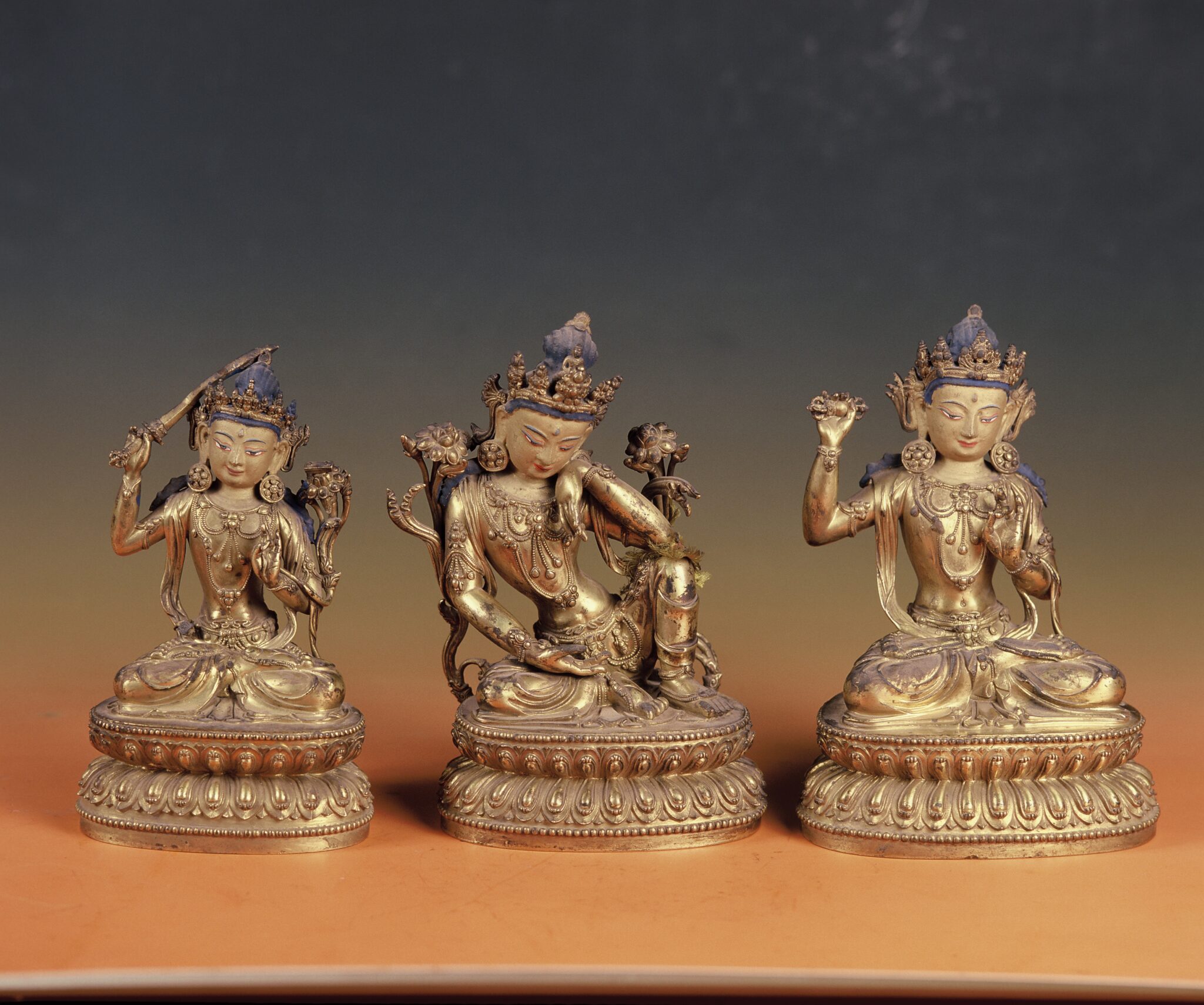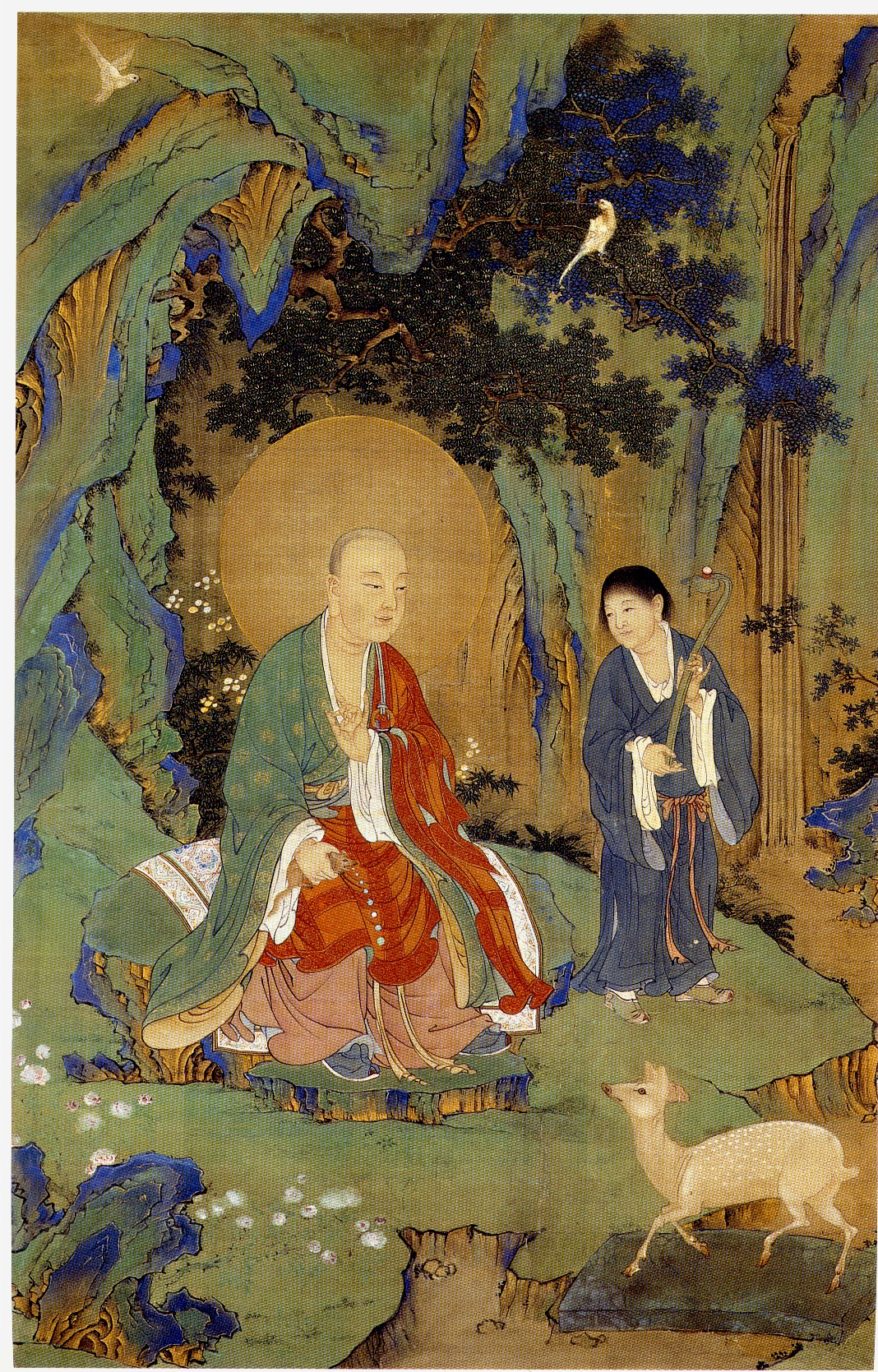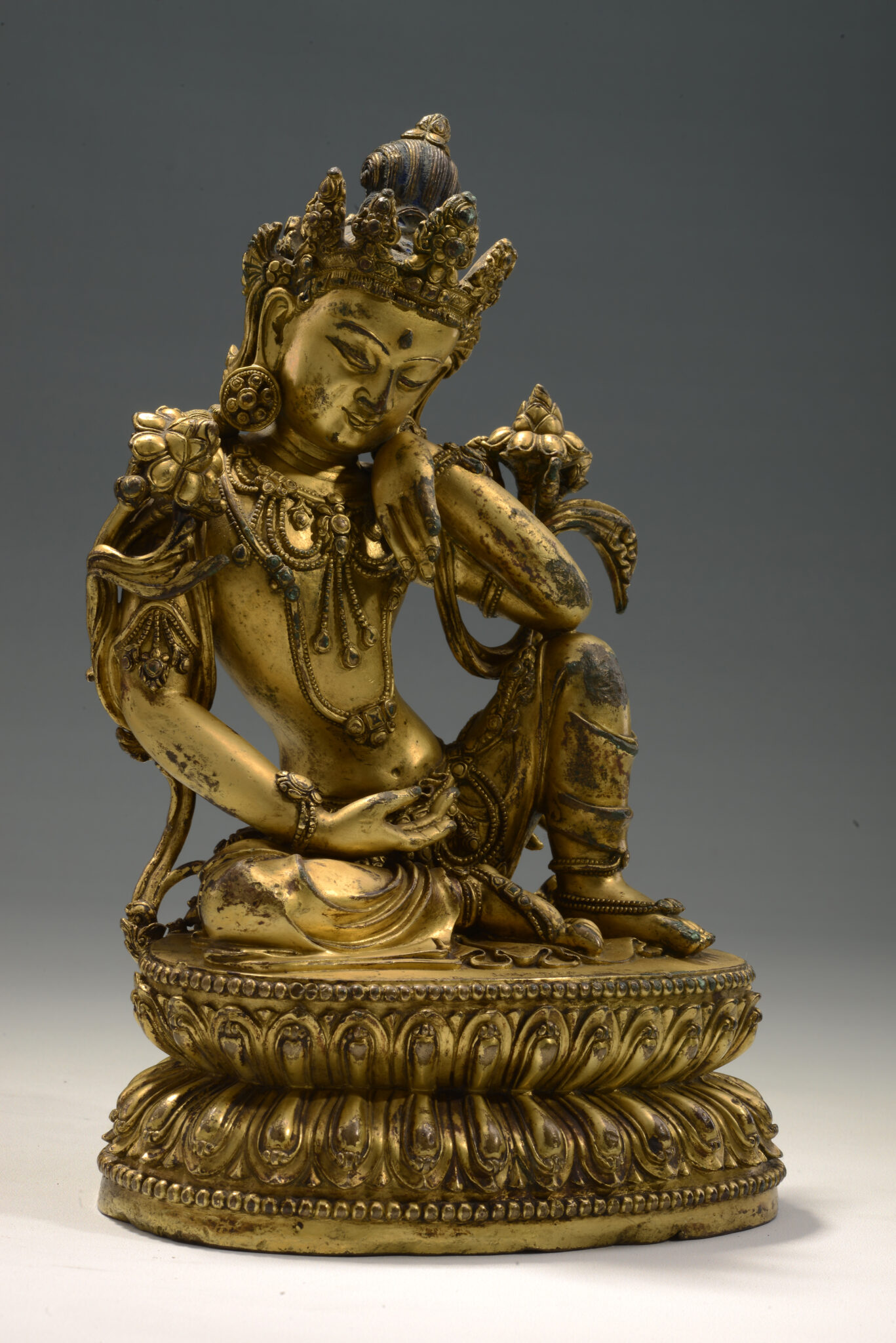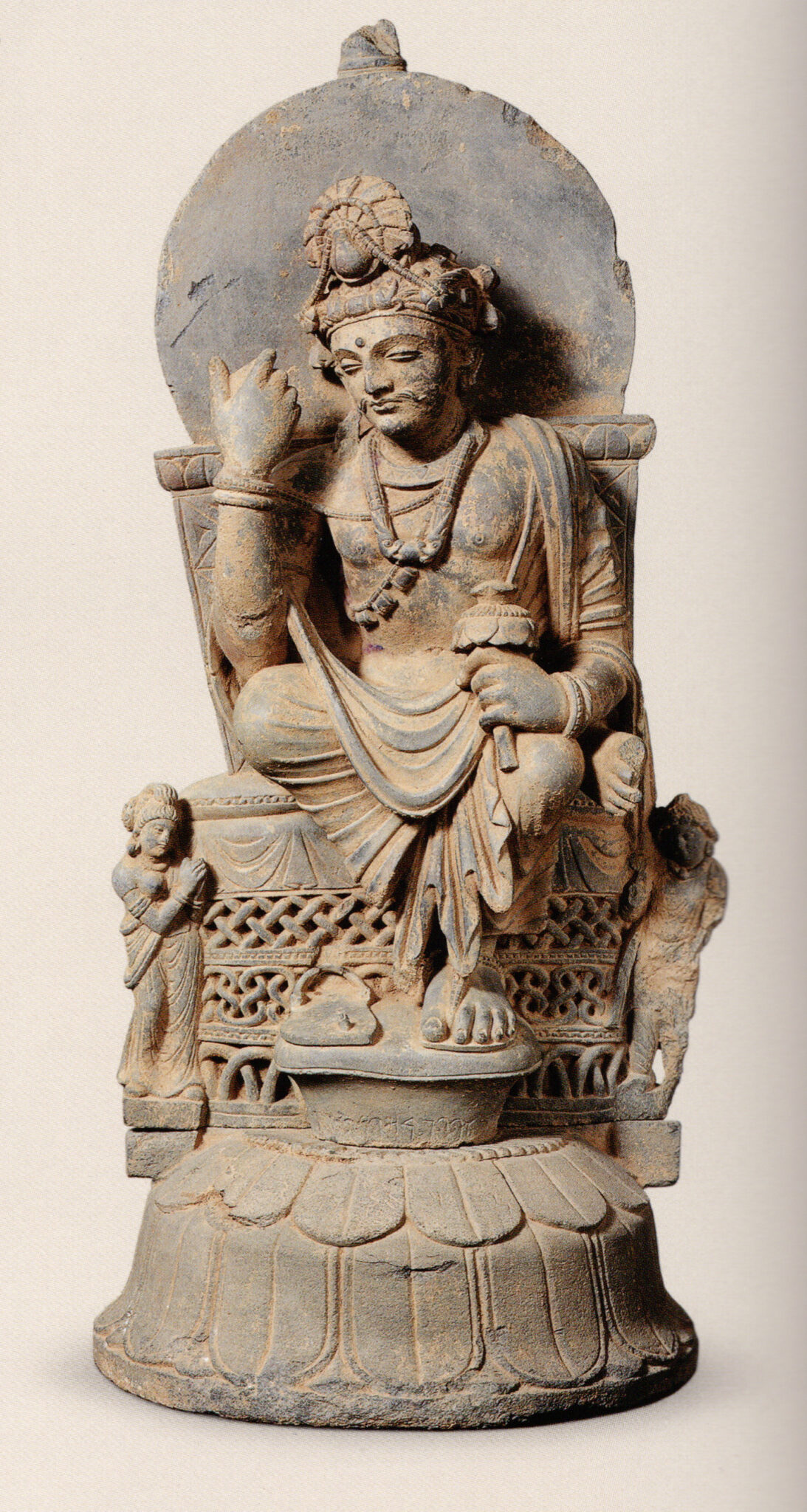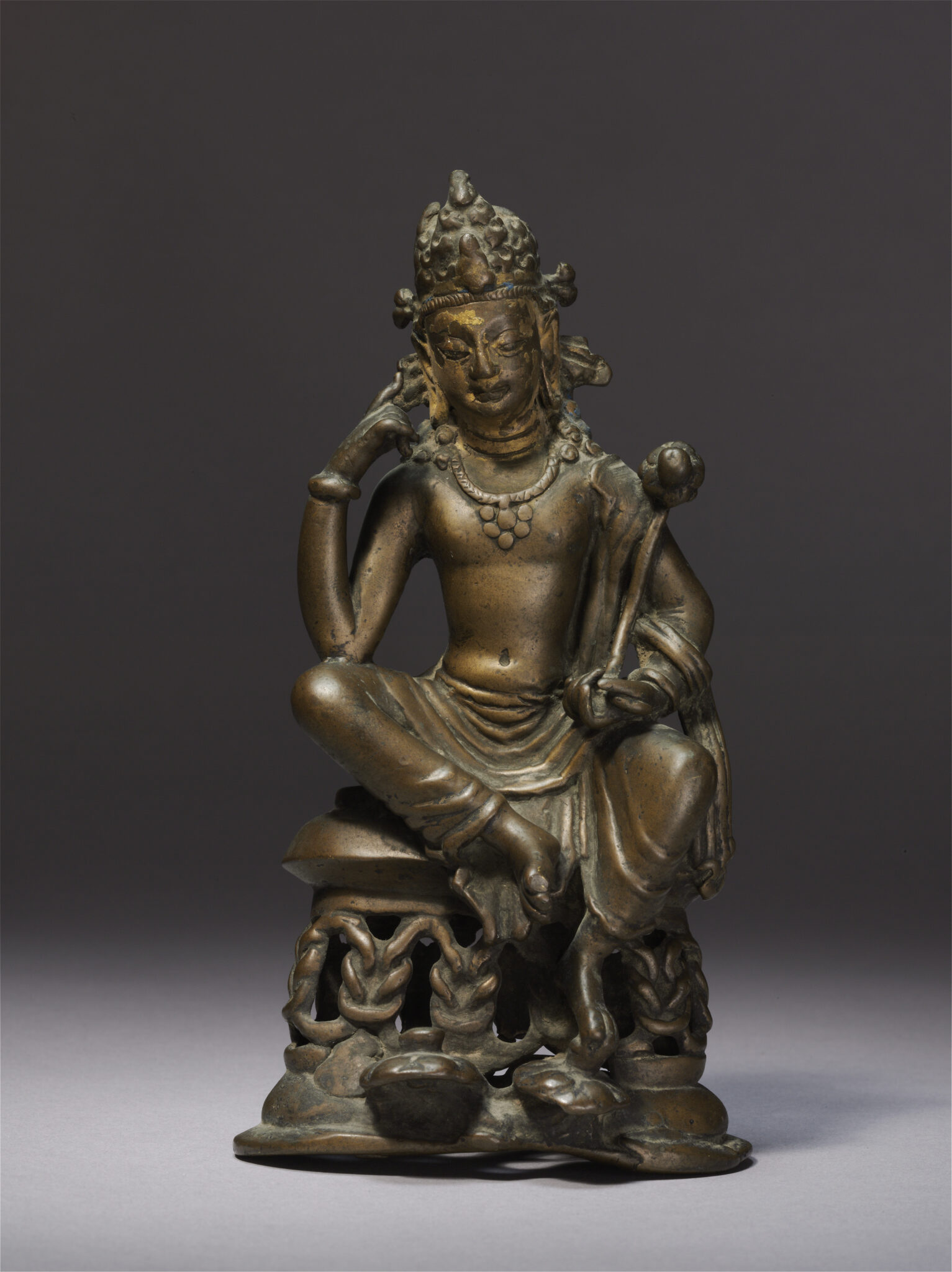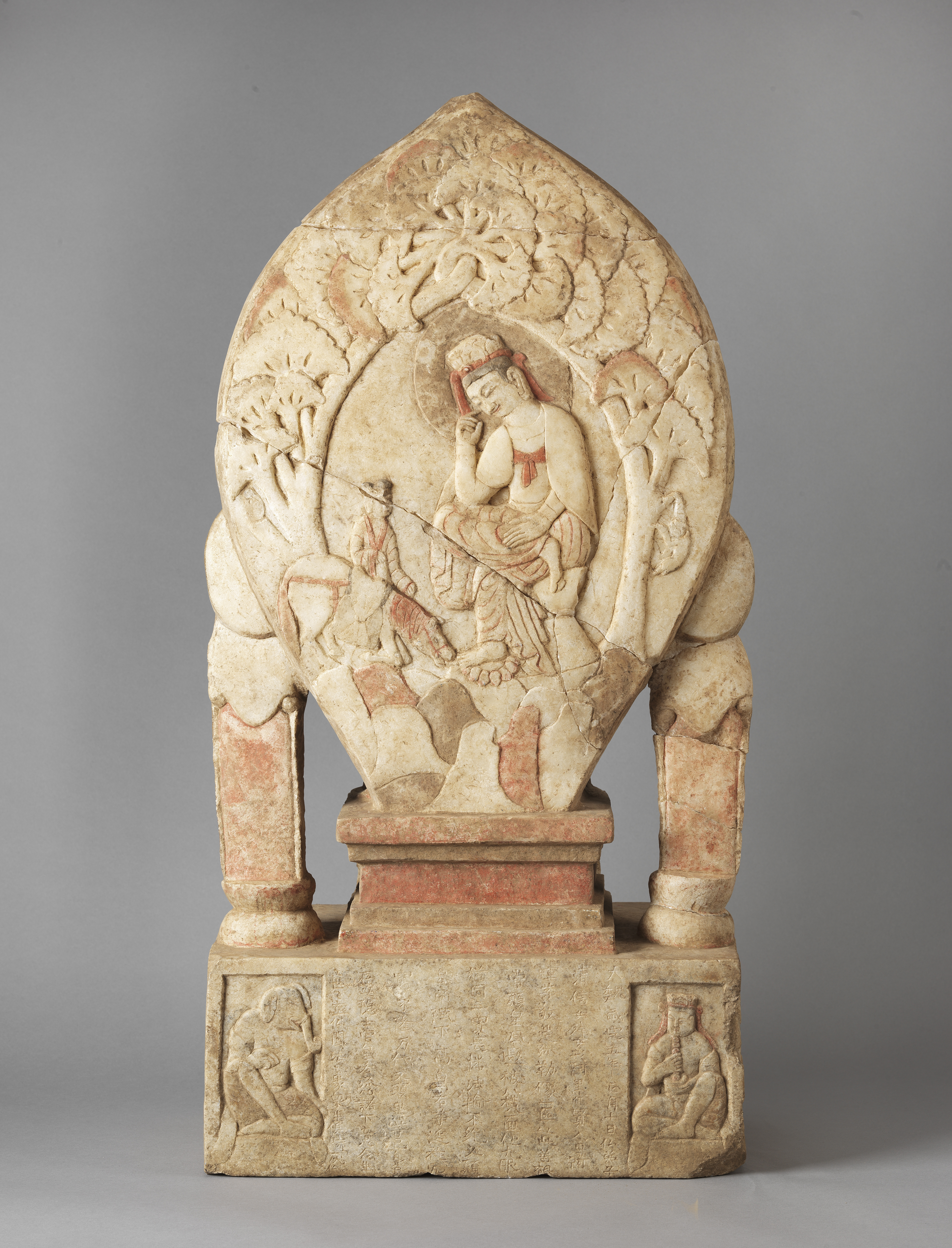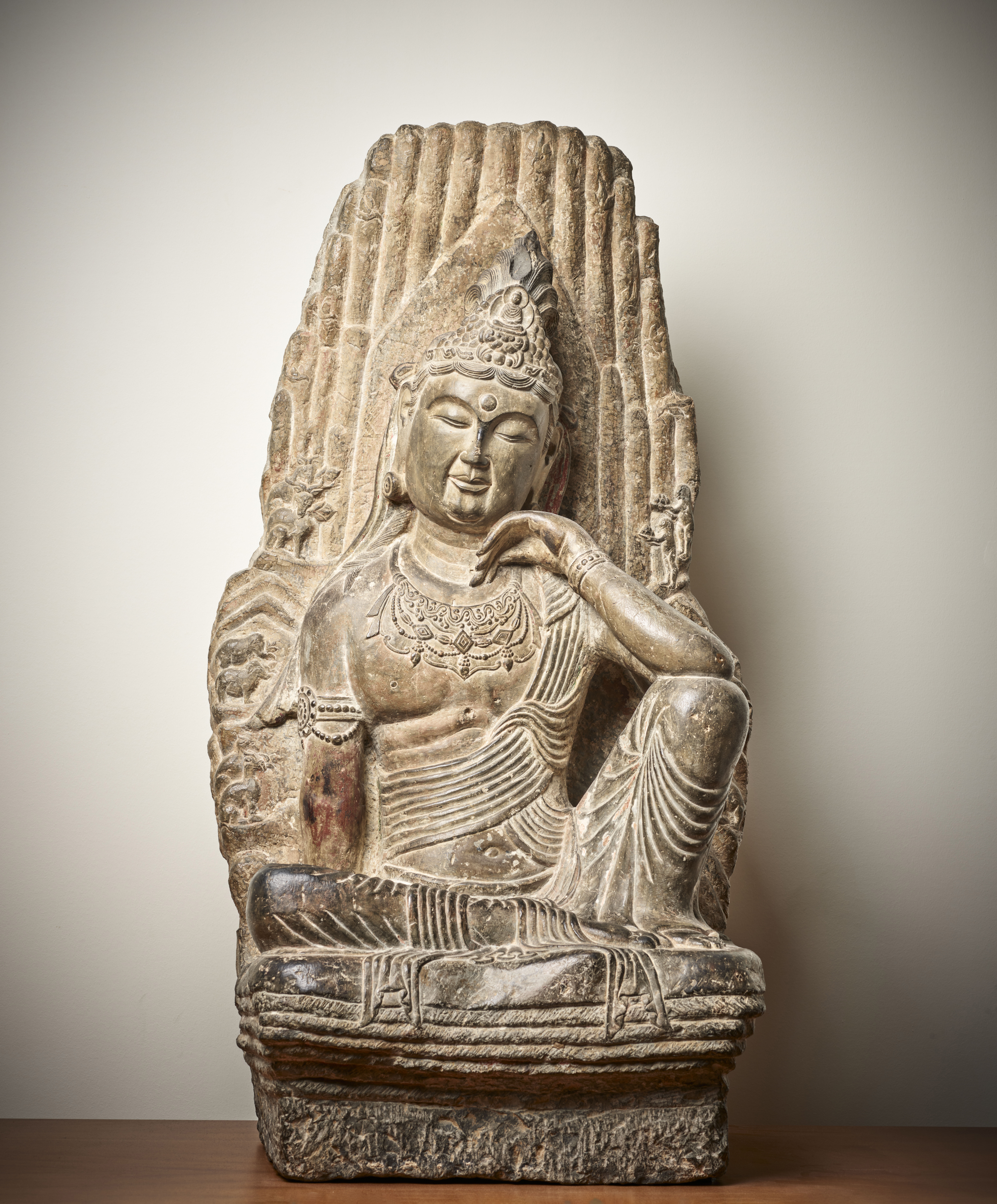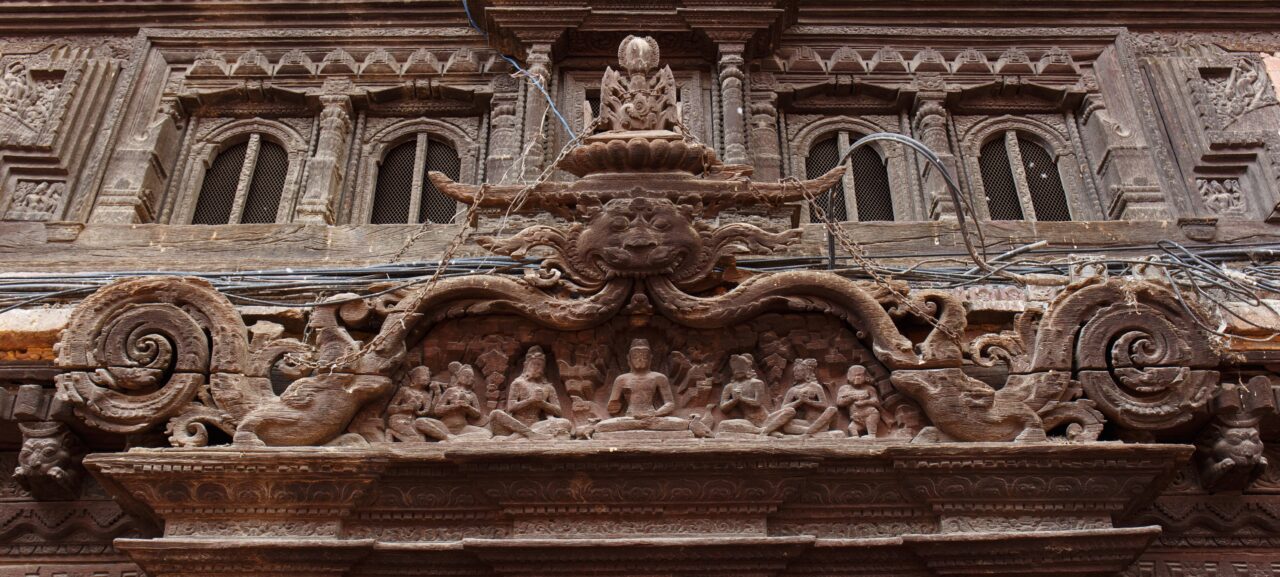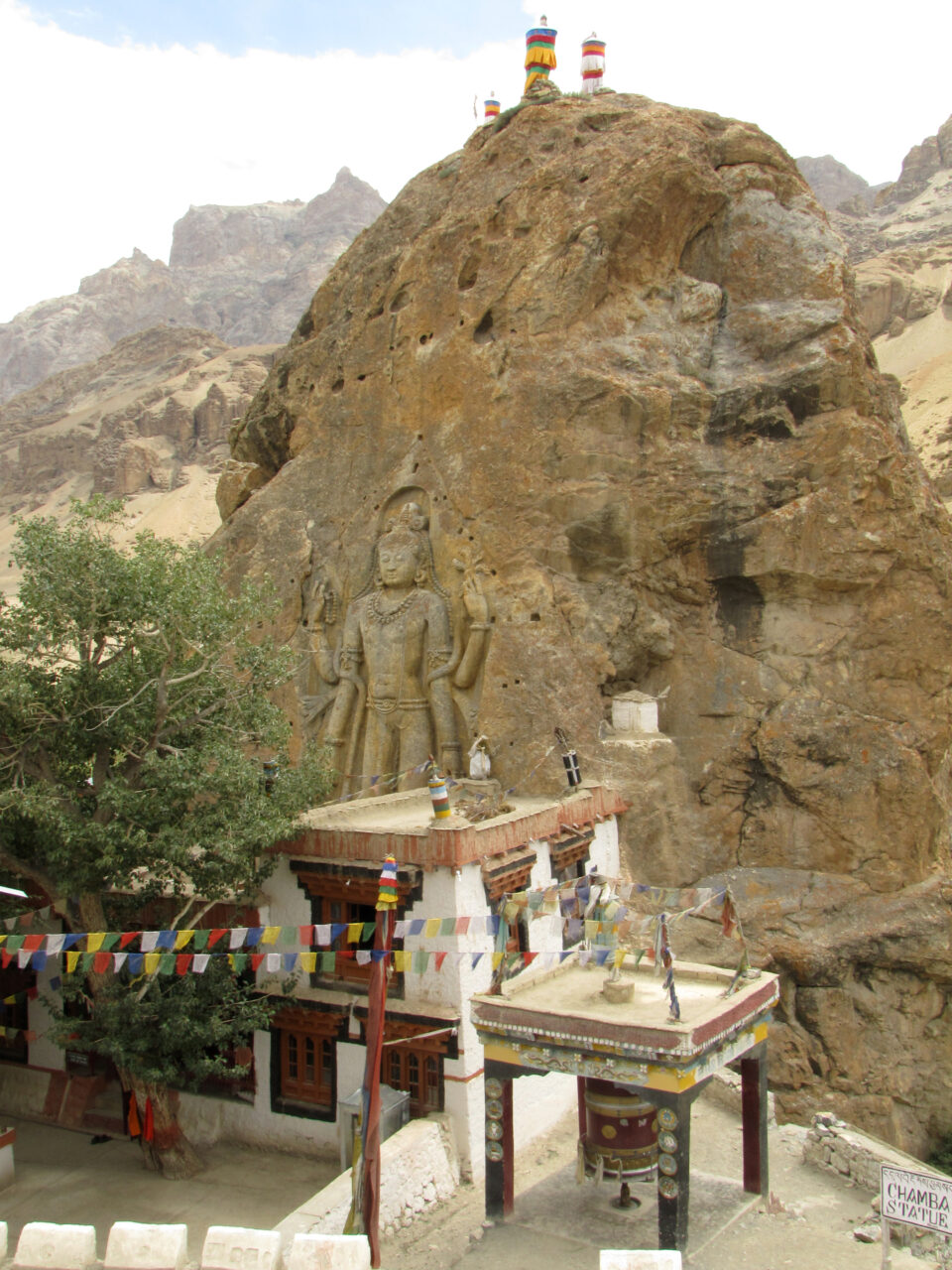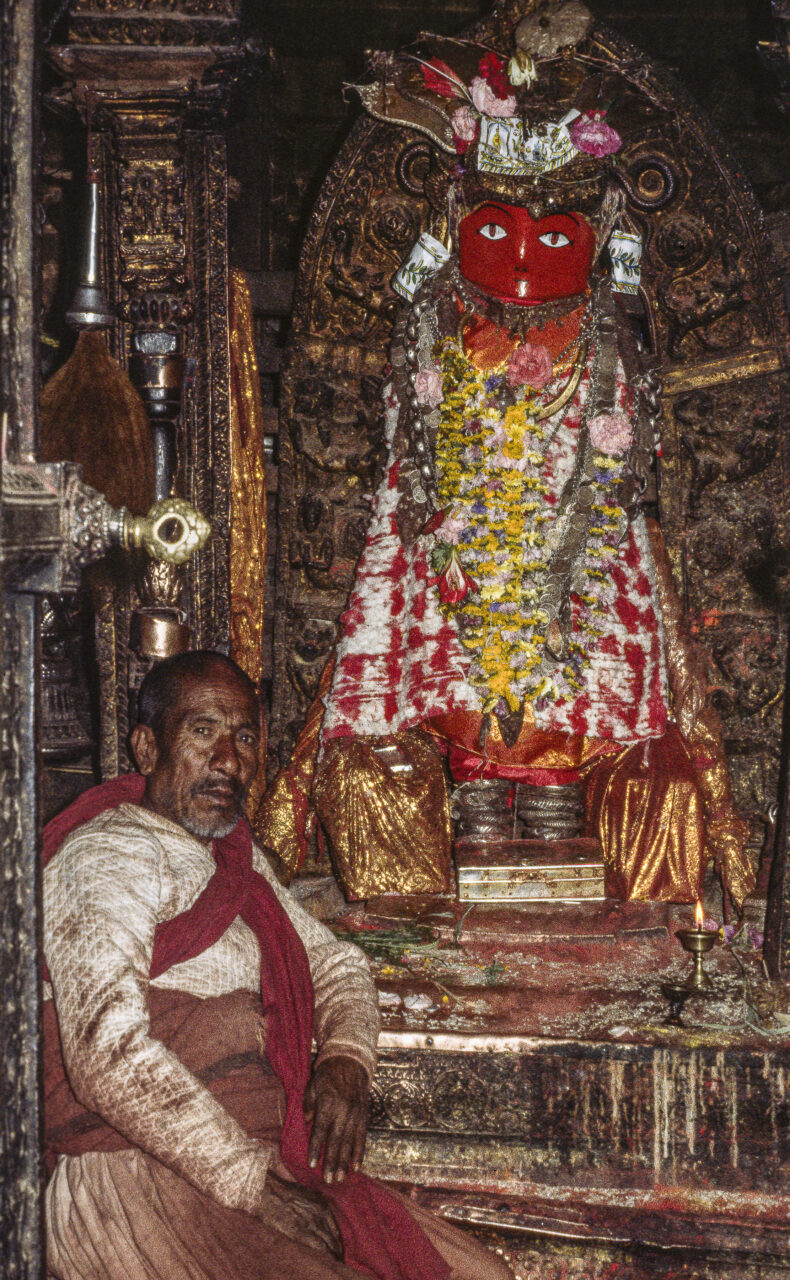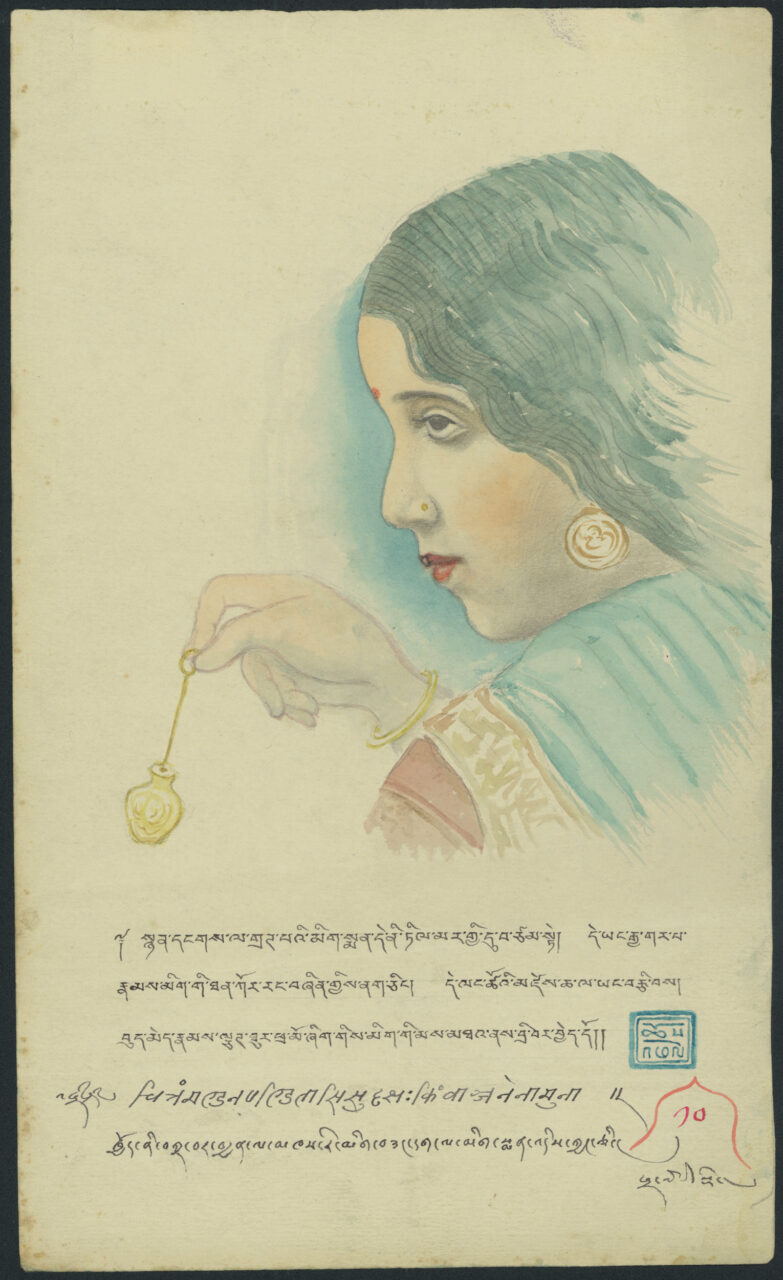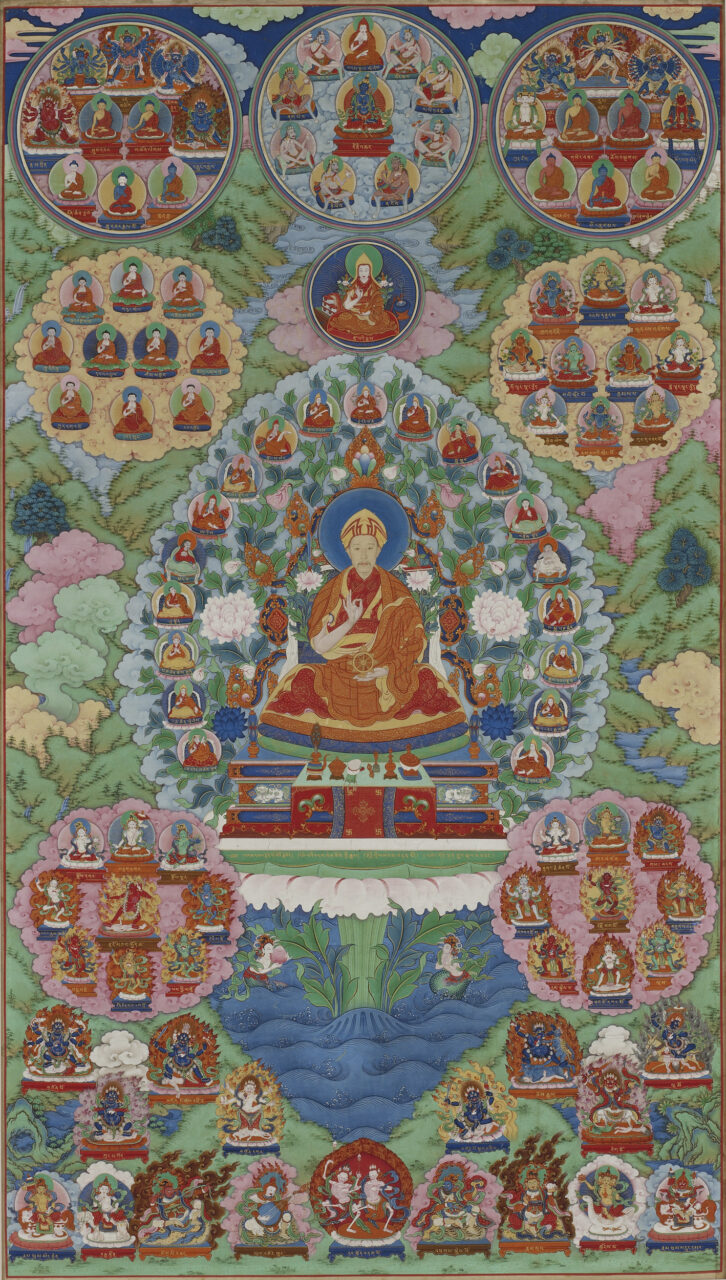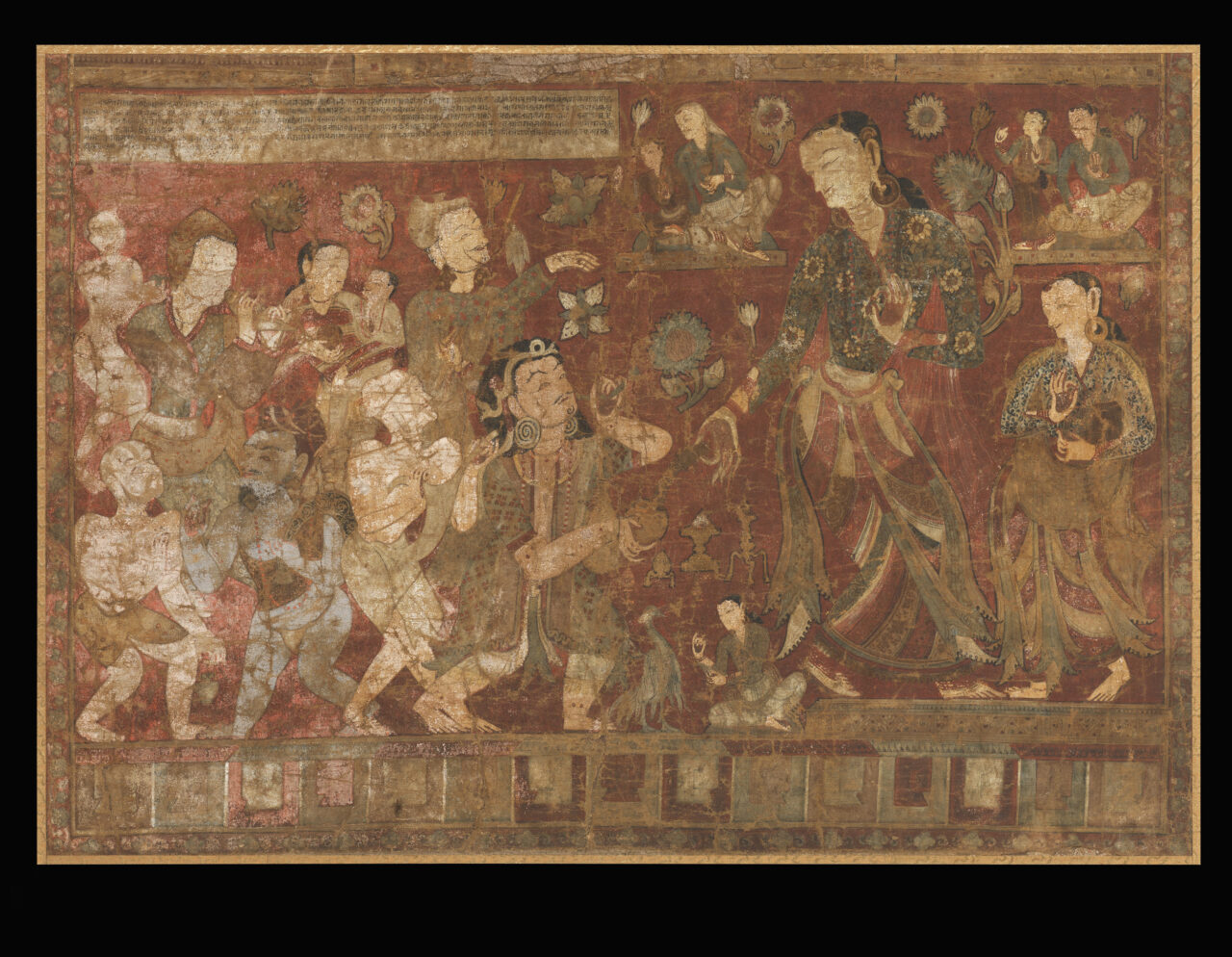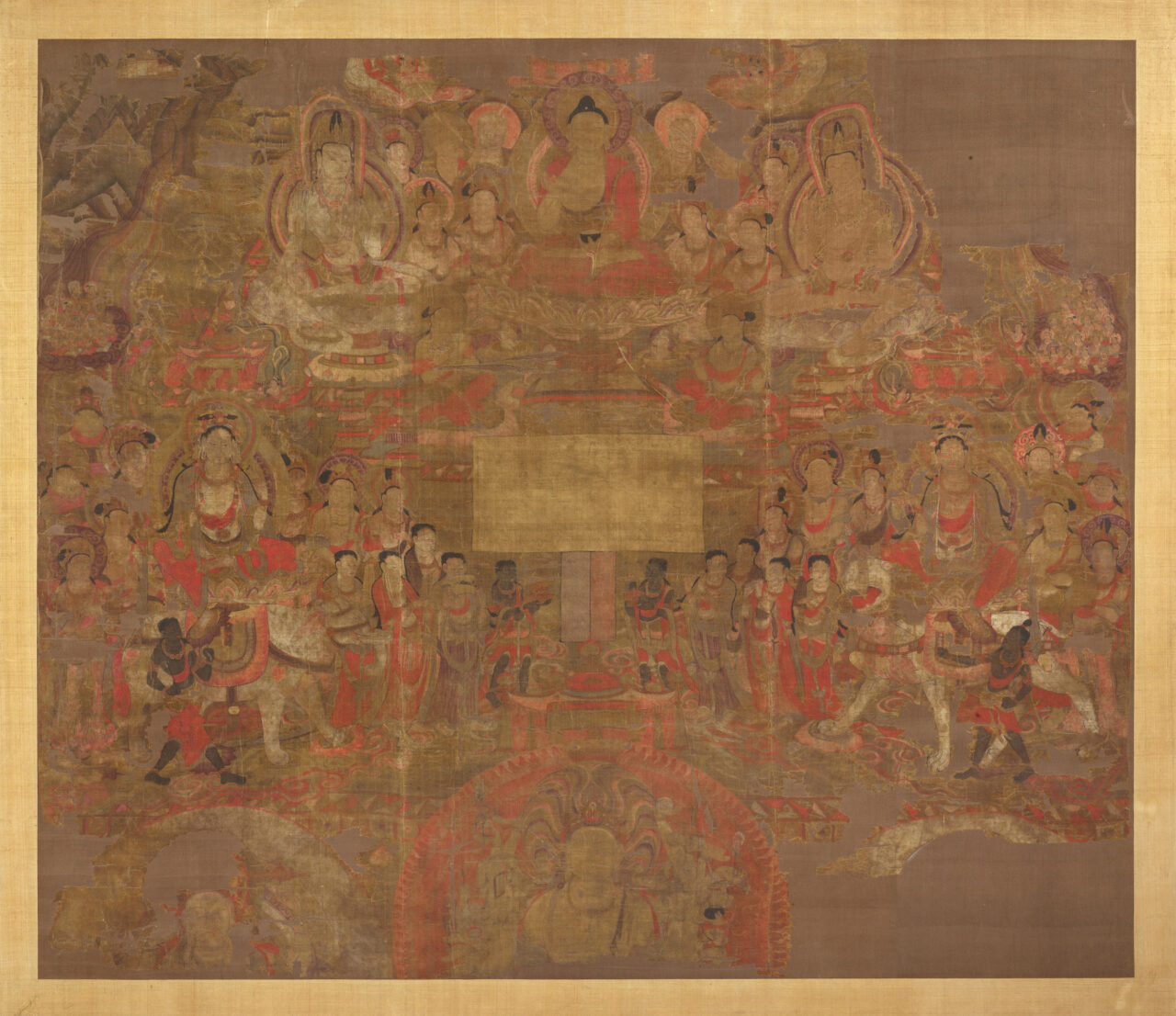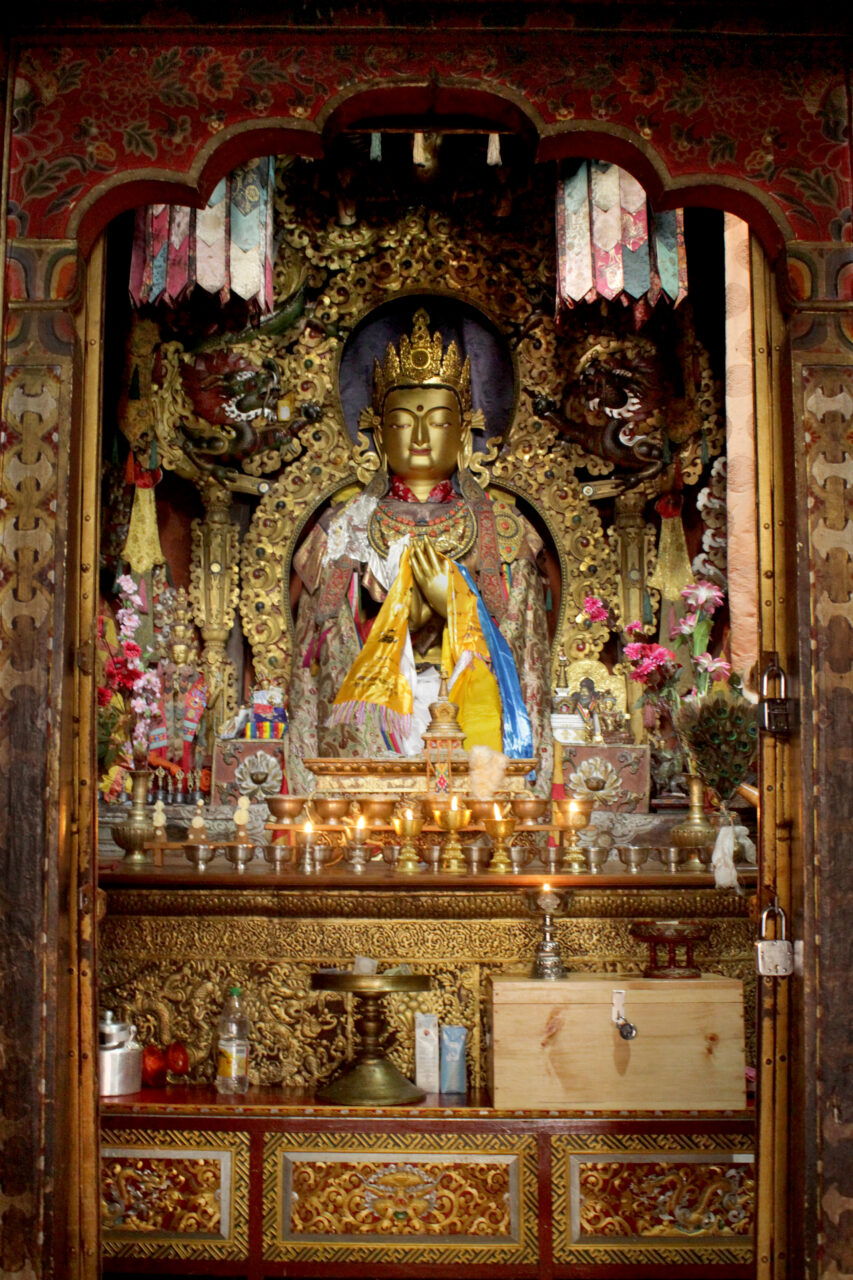Amitabha is an important buddha in Mahayana and Vajrayana Buddhism. Amitabha is often said to dwell in Sukhavati, meaning “endowed with bliss,” a pure land in the distant west where humans hope to be reborn. In the Five Buddha Family system of Vajrayana Buddhism, Amitabha is the Buddha of the Lotus family, colored red, and associated with the direction West.
The Geluk are the most recent of the major “Later Diffusion” traditions of Tibetan Buddhism. Founded on the teachings of Tsongkhapa (1357–1419 CE) and his students, the Geluk are known for their emphasis on monastic discipline and the scholastic study of Mahayana philosophy, especially Madhyamaka. In the seventeenth century the Geluk supporting the Dalai Lamas became the largest and most powerful Buddhist tradition in both Tibet and Mongolia, where city-sized Geluk monasteries and their satellites proliferated widely. For long periods, Geluk monks effectively ruled both countries in dual-rulership or priest-patron political systems. A follower of the Geluk is called a Gelukpa.
In the Himalayan context, iconography refers to the forms found in religious images, especially the attributes of deities: body color, number of arms and legs, hand gestures, poses, implements, and retinue. Often these attributes are specified in ritual texts (sadhanas), which artists are expected to follow faithfully.
The Kagyu are a major Later Diffusion tradition of Tibetan Buddhism. The Kagyu trace their lineages back to the Mahasiddhas, the great tantric masters of medieval India. The Kagyu are known for their yogic practices, as well as the teaching of Mahamudra, or the “Great Seal.” The Kagyu tradition includes many different branches, such as the Karma, Drukpa, Drigung, Tselpa, Pakmodru, and others. The most influential leaders of the Karma Kagyu are the Karmapas, a tulku lineage associated with that Kagyu branch. In Bhutan, the Drukpa Kagyu tradition serves as the state religion. A follower of the Kagyu is called a Kagyupa.
Sakya is the name of a monastery and of a major tradition of Tibetan Buddhism that originated there during the Later Diffusion of Buddhism. Sakya Monastery was the seat of power during Sakya-Mongol rule in Tibet (1260–1350s), founded on the priest-patron relationship. Notable Sakya figures include Sakya Pandita (1182–1251), who played an instrumental role in establishing Tibetan relations with the Mongols; Drogon Chogyel Pakpa (1234-1280), who served as Qubilai Khan’s imperial preceptor and invented the Pakpa Script; and Buton (1290–1364), who compiled the Tibetan Canon. The Sakya are particularly known for their Lamdre teachings. In the 1350s, Pakmodru replaced the Sakya political prominence.
Historically, Tibetan Buddhism refers to those Buddhist traditions that use Tibetan as a ritual language. It is practiced in Tibet, Mongolia, Bhutan, Ladakh, and among certain groups in Nepal, China, and Russia and has an international following. Buddhism was introduced to Tibet in two waves, first when rulers of the Tibetan Empire (seventh to ninth centuries CE), embraced the Buddhist faith as their state religion, and during the second diffusion (late tenth through thirteenth centuries), when monks and translators brought in Buddhist culture from India, Nepal, and Central Asia. As a result, the entire Buddhist canon was translated into Tibetan, and monasteries grew to become centers of intellectual, cultural, and political power. From the end of the twelfth century, Tibetans were exporting their own Buddhist traditions abroad. Tibetan Buddhism integrates Mahayana teachings with the esoteric practices of Vajrayana, and includes those developed in Tibet, such as Dzogchen, as well as indigenous Tibetan religious practices focused on local gods. Historically major traditions of Tibetan Buddhism are Nyingma, Kagyu, Sakya, and Geluk.
The Ming dynasty was a Chinese state that existed from 1368 to 1644 CE. The Ming founder, Zhu Yuanzhang (1328–1398), led an army that defeated the Yuan dynasty of the Mongol Empire and restored ethnic Chinese rule in China. Unlike the Mongols before them or the Qing dynasty after them the Ming never seriously attempted to rule the Tibetan regions, preferring instead to manage border affairs by granting titles and trading rights to friendly Tibetan monks and secular leaders. Nevertheless, several early Ming emperors had close personal relations with Tibetan lamas, and relations of trade and cultural interchange flourished between Chinese and Tibetan regions.
Avalokiteshvara, an embodiment of compassion, is a powerful bodhisattva, worshiped all across the Buddhist world. Avalokiteshvara is part of the very origin myth of the Tibetan people, and seen as the protector deity of Tibet. Many Tibetans believe that the emperor Songtsen Gampo, the Karmapas, and Dalai Lamas are all emanations of Avalokiteshvara. A special Avalokiteshvara image, the Pakpa Lokeshvara, is enshrined at the Potala Palace in Lhasa. In India and Tibet, Avalokiteshvara is understood as male, while in East Asian Buddhism, Avalokiteshvara is often thought of as female, and is known by the Chinese name Guanyin. Avalokiteshvara is recognizable in the Tibetan tradition by the lotus he holds, the image of Buddha Amitabha in his crown, and antelope skin over his shoulder.




